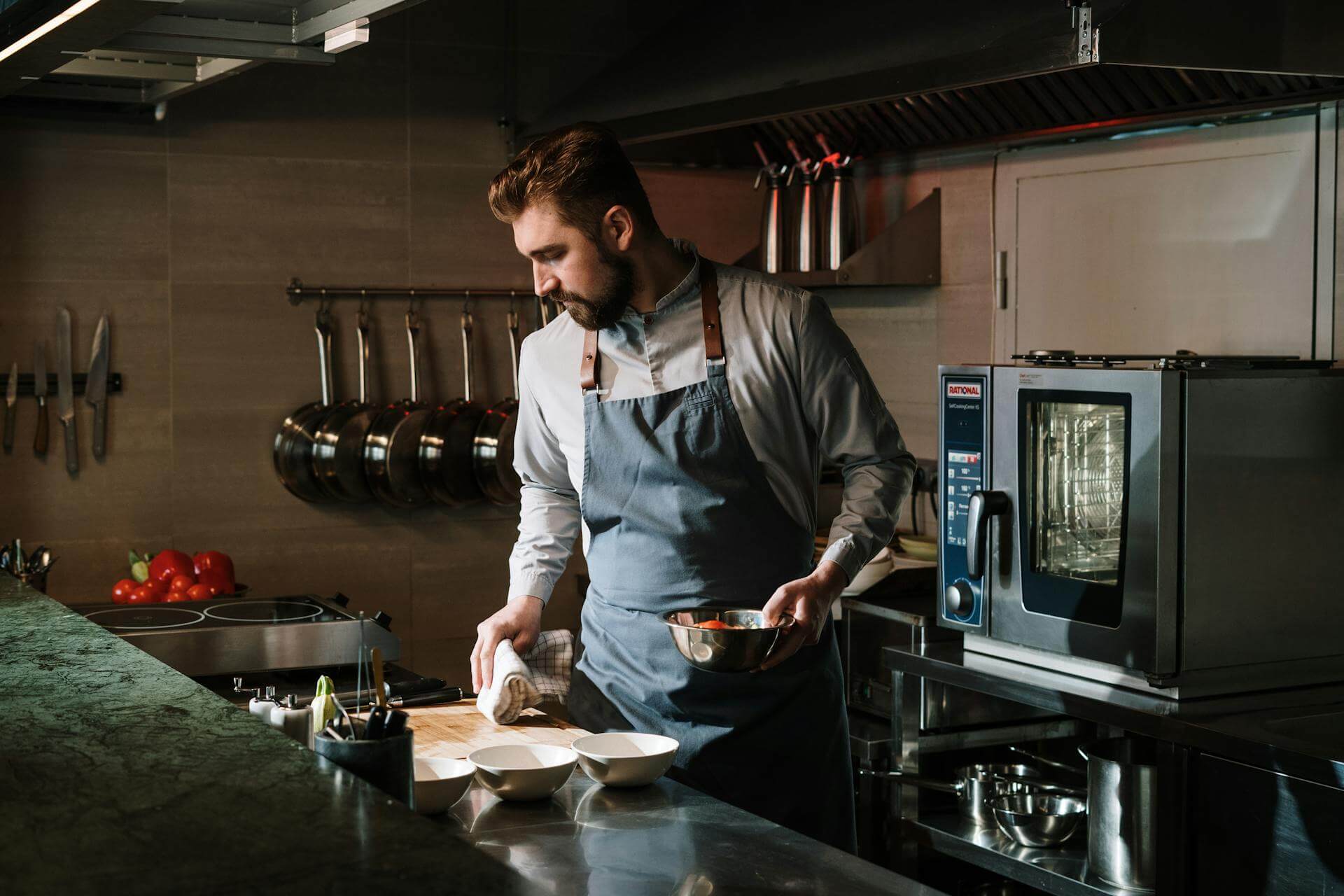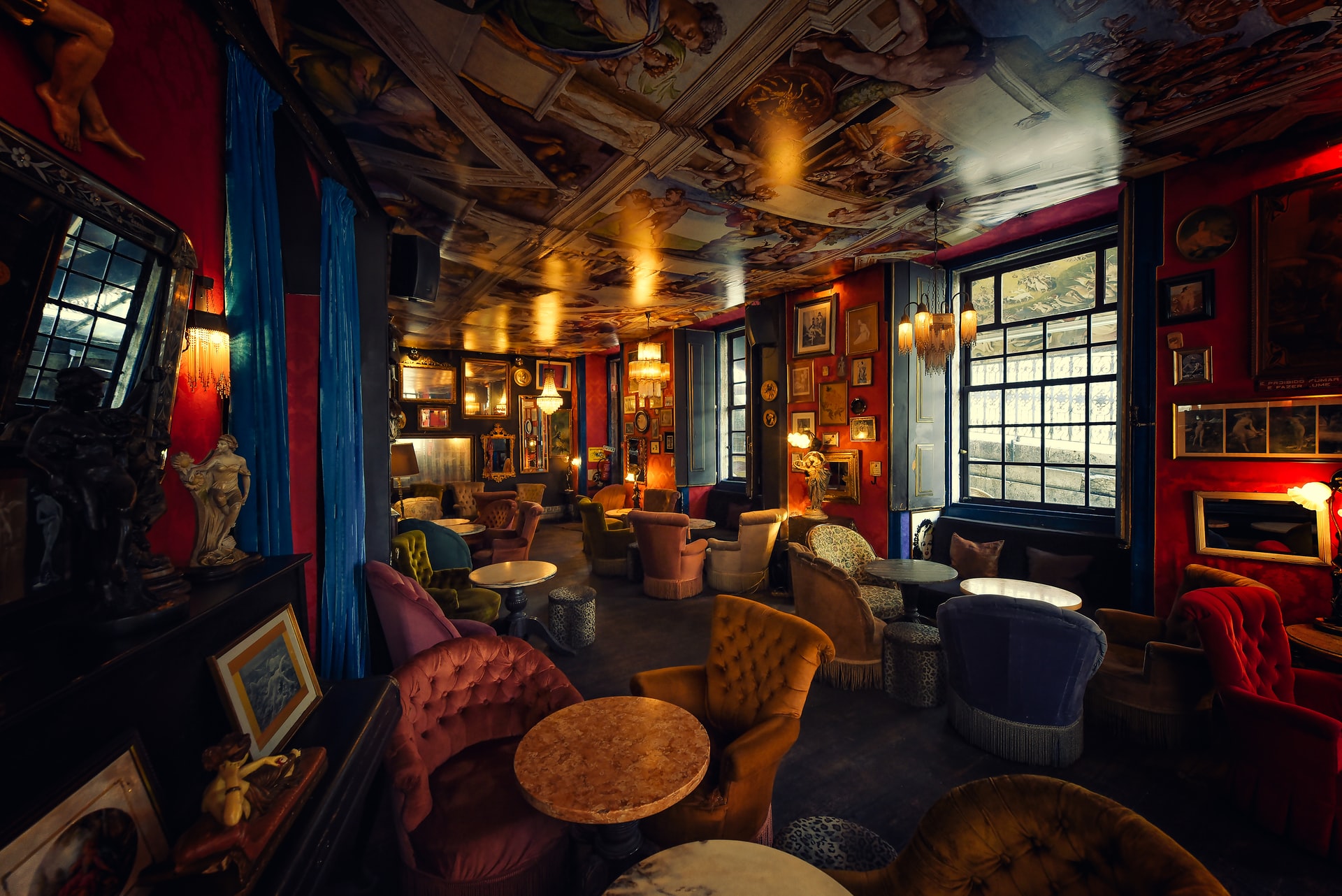The Future of Commercial Kitchen Design: Trends and Innovations
by Nathen Dubé

As the hospitality industry continues to evolve, commercial kitchen design around the globe is undergoing significant transformations.
The modern commercial kitchen must balance efficiency, sustainability, and technology to meet the demands of today’s fast-paced culinary environment.
This article explores the future trends and innovations shaping commercial kitchen design, offering insights and examples from my KRG Hospitality projects to highlight the emerging practices that are setting new standards in the industry.
Sustainability and Eco-Friendly Designs
Sustainability is no longer an optional feature but a fundamental aspect of modern commercial kitchen design.
The hospitality industry is increasingly prioritizing eco-friendly practices to reduce environmental impact and appeal to environmentally conscious consumers. Sustainable kitchen design involves the use of recycled and reclaimed materials, energy-efficient appliances, and waste reduction systems.
Key innovations:
- Recycled and reclaimed materials: Incorporating materials like recycled steel and reclaimed wood not only reduces environmental impact but also adds unique aesthetic value to the kitchen.
- Energy-efficient appliances: Using energy-conserving appliances and induction cooktops to significantly reduce energy consumption and operational costs.
- Waste reduction systems: Implementing composting and recycling systems helps manage waste effectively, and promotes sustainability.
Smart Kitchens and Technology Integration
The integration of smart technology in commercial kitchens is revolutionizing the way culinary operations are managed. Smart kitchens enhance efficiency, improve food safety, and streamline processes through automation and connectivity.
Key innovations:
- Smart appliances: Appliances that can be monitored and controlled remotely via smartphones or tablets offer greater flexibility and efficiency.
- Automated inventory systems: Real-time tracking of inventory levels helps reduce waste and ensures timely reordering, maintaining optimal stock levels.
- Advanced connectivity: Seamless integration of kitchen equipment with management software enhances coordination and operational efficiency.
Example from the field:
For a high-volume QSR company, we integrated a comprehensive smart kitchen system, including smart ovens, refrigerators, and dishwashers. These appliances could be monitored and controlled remotely, allowing the chefs to adjust settings and monitor cooking processes from their smartphones.
Additionally, an automated inventory system tracked stock levels in real-time, ensuring timely reordering and reducing waste. This technological integration significantly improved operational efficiency and product consistency.
Minimalist and Multi-functional Spaces
Each of these approaches to design are becoming increasingly important in commercial kitchen design.
These trends focus on creating streamlined, efficient spaces that maximize utility and flexibility while maintaining a clean and organized appearance.
Key innovations:
- Minimalist design: Clean lines, handleless cabinetry, and integrated appliances create a sleek and uncluttered kitchen environment.
- Multi-functional workstations: Workstations that serve multiple purposes—such as prep stations that double as serving counters—maximize space utilization.
- Adaptable layouts: Modular equipment and flexible layouts allow kitchens to be easily reconfigured to meet changing needs and trends.
Example from the field:
For a client’s boutique hotel restaurant, we designed a minimalist kitchen with handleless cabinets and integrated appliances to create a sleek, uncluttered look. Multi-functional workstations, such as prep stations that doubled as serving counters, maximized the utility of the space.
This design provided the kitchen staff with a functional and efficient workspace that was easy to clean and maintain.
Health and Wellness-focused Designs
The focus on health and wellness in commercial kitchen design is becoming more pronounced.
Improved ventilation systems, touchless technology, and ergonomic workstations are prioritized to create healthier and safer cooking environments.
Key innovations:
- Advanced ventilation systems: Ensuring optimal air quality and reducing heat stress for kitchen staff.
- Touchless technology: Faucets, soap dispensers, and trash cans that operate without physical contact minimize the risk of contamination.
- Ergonomic workstations: Designed to reduce physical strain and improve overall efficiency.
Example from the field:
In a project for a high-end restaurant, we installed an advanced ventilation system to ensure optimal air quality, and reduce heat stress for kitchen staff. Touchless faucets and soap dispensers were integrated to minimize contamination risks, while ergonomic workstations were designed to reduce physical strain and improve overall efficiency.
These health-focused design elements not only enhanced the safety and well-being of the staff but also ensured compliance with stringent health regulations.
Energy and Cost Efficiency
Energy and cost efficiency are critical considerations in commercial kitchen design. The adoption of energy-efficient appliances and systems not only reduces operational costs but also aligns with environmental sustainability goals.
Key innovations:
- Energy-efficient appliances: Induction cooktops, high-efficiency refrigeration units, and other energy-conserving appliances reduce energy consumption.
- Smart energy management systems: These systems monitor and optimize energy usage, providing real-time data to help manage and reduce costs.
- Sustainable design practices: Incorporating energy-saving technologies and materials that have a lower environmental impact.
Example from the field:
In a project for a large food hall kitchen, we implemented energy-efficient appliances such as induction cooktops and high-efficiency deep fryers. We also incorporated smart energy management systems to monitor and optimize energy usage.
These measures resulted in substantial cost savings, and reduced the kitchen’s overall energy consumption.
Future-proofing Through Flexibility
Flexibility is becoming a crucial aspect of commercial kitchen design. As the hospitality industry continues to evolve, kitchens need to be adaptable to changing needs and trends.
Key innovations:
- Modular equipment: Equipment that can be easily moved and reconfigured to suit different needs.
- Adaptable layouts: Flexible layouts that allow for easy adjustments as the menu or operational needs change.
- Future-proof design: Designing kitchens that can accommodate future technological advancements and changes to the culinary landscape.
Example from the field:
For a dynamic restaurant that frequently updates its menu, we designed a flexible kitchen with modular equipment that could be easily reconfigured.
This adaptability allowed the kitchen to seamlessly transition between different cooking styles and menu offerings, ensuring it remained efficient and relevant despite changing trends.
Conclusion
The future of commercial kitchen design in the hospitality space is being shaped by sustainability, technology integration, minimalist and multi-functional spaces, health and wellness considerations, energy efficiency, and flexibility.
These trends not only enhance the functionality and efficiency of commercial kitchens but also address the growing demands for environmental responsibility, health, and adaptability. By staying ahead of these trends, hospitality businesses can create kitchens that are not only cutting-edge but also sustainable and efficient, ensuring long-term success in an ever-evolving industry.
Are you ready to transform your commercial kitchen with the latest trends and innovations? Contact us today to learn how we can help you design a kitchen that meets the demands of modern culinary operations. Share your thoughts and favorite trends in the comments below!
Image: cottonbro studio via Pexels


